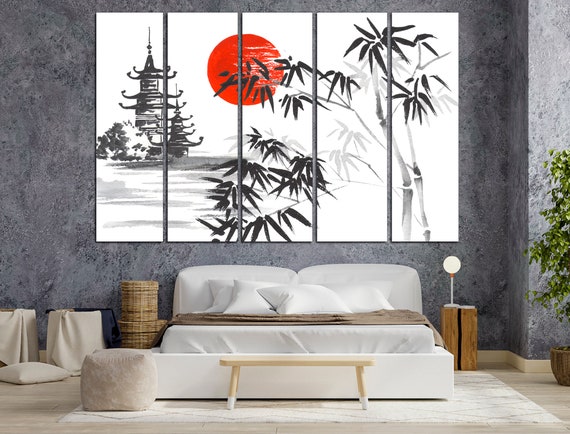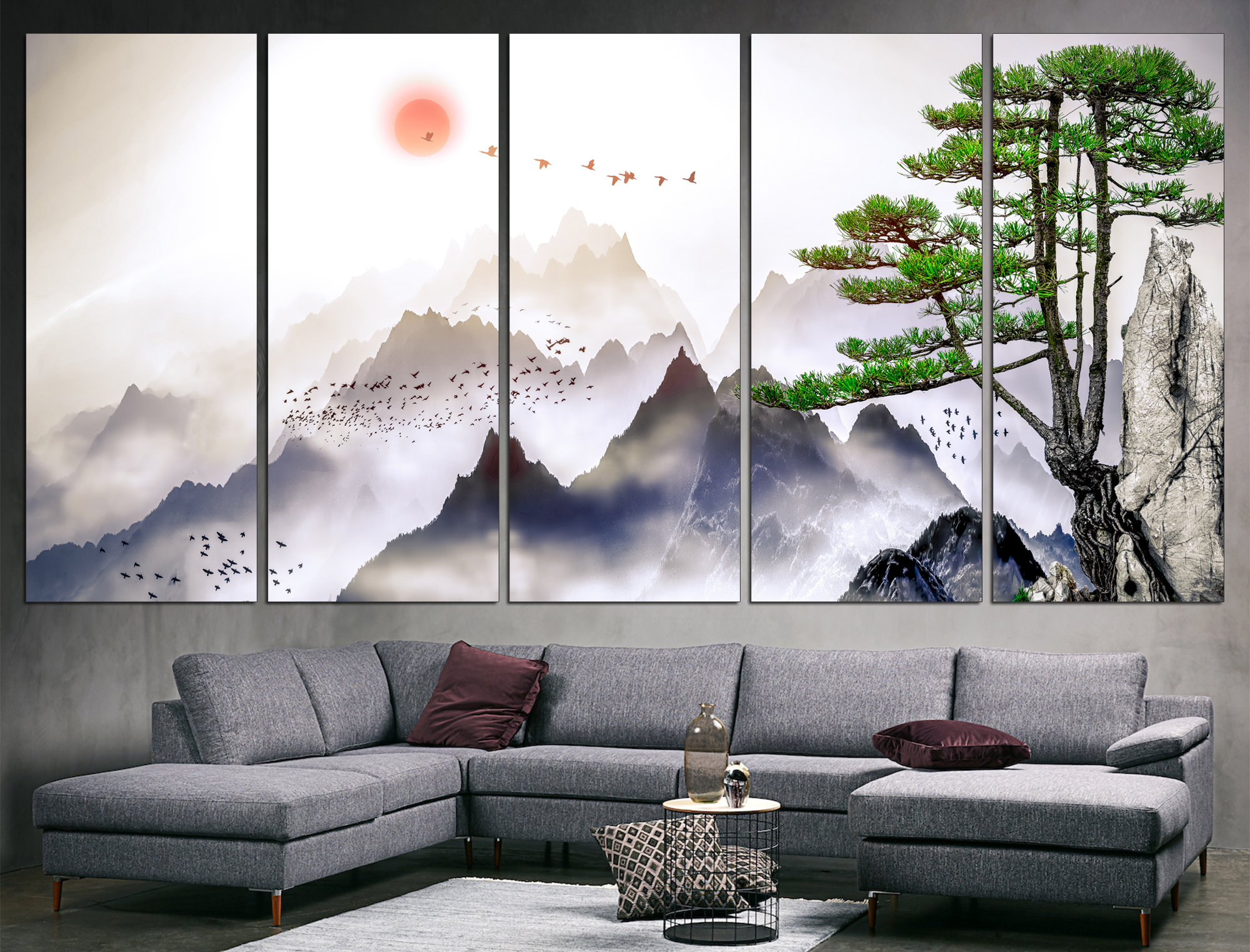Welcome to the beautiful world of Japan wall decor, where artistry meets tranquility! If you’re looking to infuse your living space with a sense of calm and elegance, you’re in the right place. As someone who has personally navigated the vibrant landscape of Japanese decor, I know how impactful these styles can be. This guide will not only provide insights into incorporating Japanese art into your home but will also share tips, styles, and personal anecdotes that I hope will inspire you. Let’s dive in!
Understanding Japan Wall Decor
Japanese wall decor is steeped in tradition and culture. It often reflects the natural beauty of Japan’s landscapes, its seasonal changes, and the philosophy of simplicity and balance.
The Philosophy Behind Japanese Decor
At the heart of Japanese decor lies the principle of wabi-sabi, which celebrates imperfection and transience. This philosophy manifests in wall decor through natural materials, organic shapes, and minimalistic designs.
The Balance of Nature and Space
Japanese decor elegantly balances nature and man-made objects. It’s common to see art that incorporates elements of nature through traditional themes like cherry blossoms, mountains, and serene landscapes.

Types of Japan Wall Decor
When considering Japan wall decor, you have a range of styles to choose from. Here are some popular types:

1. Japanese Ink Paintings (Sumi-e)
| Style | Description | Pros | Cons |
|---|---|---|---|
| Sumi-e | Traditional ink painting that represents landscapes, flora, and fauna. | Captivating and serene; promotes mindfulness. | Can be costly; requires proper care. |
2. Silk Screens (Byobu)
| Style | Description | Pros | Cons |
|---|---|---|---|
| Byobu | Folded screens that depict intricate landscapes or historical scenes. | Versatile; can be used as room dividers. | Requires ample space; might not suit smaller rooms. |

3. Calligraphy Art (Shodō)
| Style | Description | Pros | Cons |
|---|---|---|---|
| Shodō | The art of beautiful writing; often features inspiring proverbs. | Meaningful and personal; easy to incorporate. | Requires understanding of Japanese characters. |
4. Textile Art (Noren)
| Style | Description | Pros | Cons |
|---|---|---|---|
| Noren | Fabric dividers that are often hung in doorways. | Softens spaces; adds color and texture. | May require washing; potential for fading. |

Choosing the Right Japan Wall Decor for Your Space
Choosing the right decor can be daunting. Here are some personal experiences and tips to help guide your decision-making process.

Identify Your Space’s Theme
Is your home modern, traditional, or a mix? For instance, I live in a modern apartment but love traditional Japanese aesthetics. I’ve decorated my living area with a large Sumi-e painting, which complements my minimalist furniture beautifully.
Consider Your Color Palette
Japanese decor often features muted colors. If you have a bright, vibrant home, consider incorporating shades of beige, green, and blue to harmonize the space. For instance, I added a muted green byobu that not only adds character but also balances out my bright walls.

Size and Scale Matters
Make sure that your decor pieces are proportionate to your space. A large painting might overwhelm a small room, while tiny art pieces can get lost in a spacious area. I learned this the hard way when I initially placed a tiny calligraphy piece in a large dining room, making it feel insignificant.
Incorporating Japanese Wall Decor into Your Home

Now that you’re familiar with the various types of Japan wall decor, here are practical tips for incorporating them into your home.
1. Create a Feature Wall
One of the best ways to showcase your Japan wall decor is by creating a feature wall. Choose a wall in your living room or bedroom that will serve as a backdrop for multiple pieces, such as a combination of Sumi-e and Shodō.
2. Mix and Match Styles
Don’t be afraid to mix different styles of Japanese decor! I enjoy combining modern prints with traditional noren, creating a visually stimulating yet harmonious look.
3. Use Natural Elements
Incorporating natural elements such as bamboo, wood, or stone can enhance the Japanese aesthetic. I’ve placed a bamboo plant next to my calligraphy piece, which adds life and vibrancy to the decor.
4. Lighting is Key
Use soft, warm lighting to highlight your wall art. I’ve installed dimmable lights in my dining area that allow me to adjust the ambiance depending on the time of day or occasion.
Popular Japanese Wall Decor Trends
To keep your decor fresh and in line with current trends, consider these popular Japanese wall decor trends:
1. Minimalist Designs
Less is more! These designs focus on simplicity, making them perfect for modern homes.
2. Nature Inspirations
Art that reflects natural elements is timeless. Think landscapes or floral patterns.
3. Handcrafted Pieces
Investing in handmade art supports artisans and adds a unique touch to your decor.
Where to Find Japan Wall Decor
If you’re ready to enhance your space with Japanese wall decor, here are some recommended sources:
1. Online Marketplaces
2. Local Art Galleries
Visit local galleries that feature Asian art to find unique pieces that resonate with you.
3. Japanese Cultural Shops
Many cities have stores specifically devoted to Japanese culture, where you can find authentic decor items.
FAQs about Japan Wall Decor
What materials are typically used in Japanese wall decor?
Japanese wall decor often uses natural materials such as rice paper, silk, wood, and bamboo.
How can I maintain my Japanese art pieces?
Keep them out of direct sunlight to prevent fading, and dust them regularly. For ink paintings, frame them under glass for added protection.
Is Japanese decor expensive?
Prices vary widely depending on the style and materials used. Handmade items can be more expensive but are often worth the investment for their uniqueness.
Can I mix Japanese decor with other styles?
Absolutely! Japanese decor can blend beautifully with various styles, including modern, rustic, and eclectic.
Conclusion
Incorporating Japan wall decor into your home can create a serene and captivating atmosphere. By understanding the different styles, choosing the right pieces for your space, and following the latest trends, you can elevate your home decor into a peaceful retreat. I hope this guide inspires you to explore the beauty of Japanese art, just as it has enriched my own living space!